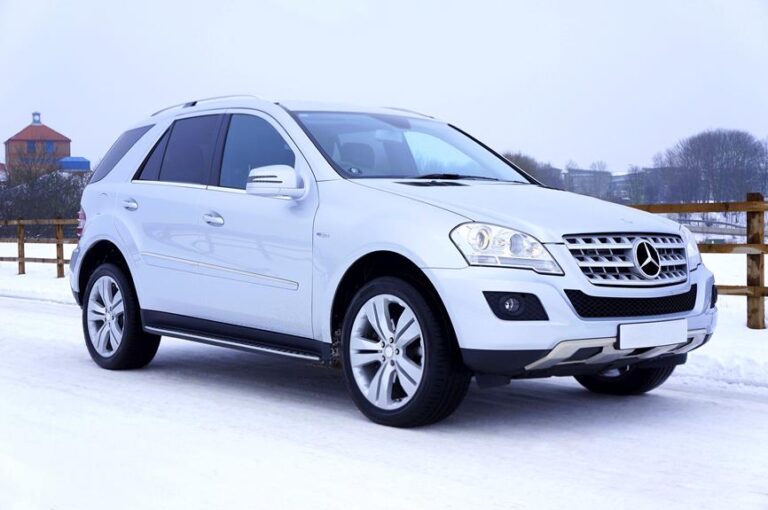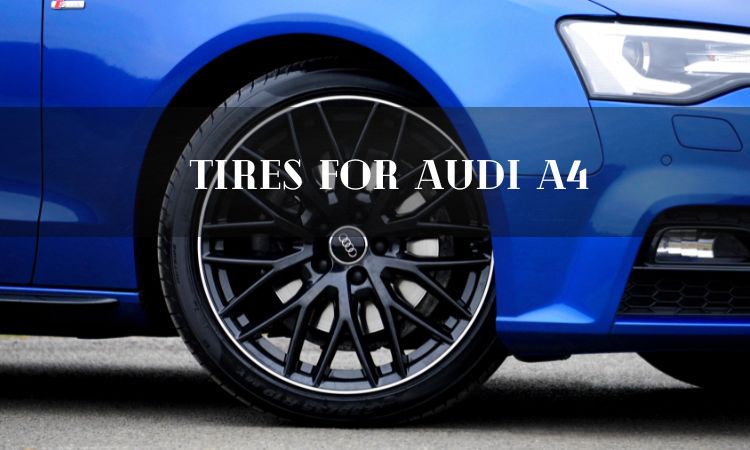Different Types of Car Tires Explained
Get ready to hit the road with confidence as we delve into the fascinating world of car tires.
In this comprehensive guide, we will uncover the various types of car tires, from the all-season wonders to the performance-driven beasts and everything in between. With detailed explanations and expert insights, you'll gain a deeper understanding of each tire's unique characteristics and find the perfect match for your driving needs.
So fasten your seatbelts and prepare to embark on a tire knowledge adventure like never before.
Key Takeaways
- Radial tires have superior grip and handling capabilities due to their construction with layers of steel belts running radially across the tire.
- All-season tires are suitable for use in both dry and wet conditions, providing good performance on light snow and offering longevity and durability.
- Winter tires are designed for optimal traction in cold weather conditions, with a unique tread pattern and rubber compound that enhance grip on snow and ice.
- Performance tires enhance a car's handling and grip on dry pavement, with a different rubber compound and tread pattern that maximize grip on dry roads and improve cornering ability and stability.
Radial Tires
Radial tires, known for their sturdy construction and efficient performance, have become increasingly popular among car owners in recent years. These tires are constructed with layers of steel belts running radially across the tire, providing enhanced stability and durability. The steel belts are typically reinforced with polyester or nylon cords, further reinforcing the tire's structure.
The main advantage of radial tires lies in their superior grip and handling capabilities. The radial design allows for a larger contact patch with the road, resulting in improved traction and control, especially during cornering and braking. Additionally, the flexible sidewalls of radial tires offer a smoother and more comfortable ride, reducing vibrations and noise.
Another significant advantage of radial tires is their fuel efficiency. The construction and design of these tires result in lower rolling resistance, meaning the engine doesn't have to work as hard to move the vehicle forward. This translates to improved fuel economy and reduced carbon emissions, making radial tires an eco-friendly choice.
However, it's important to note that radial tires may have some drawbacks. The stiffer sidewalls of these tires can result in a harsher ride on rough roads, and they may be more prone to damage from potholes and sharp objects. Additionally, radial tires tend to be more expensive than their bias-ply counterparts.
All-Season Tires
All-season tires are designed to provide drivers with weather versatility, making them suitable for use in both dry and wet conditions. These tires also offer good performance on light snow and provide a comfortable and smooth ride.
Additionally, all-season tires are known for their longevity and durability, making them a popular choice among drivers who want a reliable and long-lasting tire option.
Weather Versatility
When considering tire options, it is crucial to evaluate the weather versatility of each type to ensure optimal performance in various driving conditions. This is especially important during the rainy season when roads can become slippery and dangerous. Wet road performance is a key factor to consider when choosing tires, as it affects traction, braking distance, and overall handling.
There are different types of tires available, each designed to excel in specific weather conditions. For wet road performance, tires with deep treads and specialized rubber compounds are recommended. These tires are designed to channel water away from the contact patch, reducing the risk of hydroplaning and improving grip on wet surfaces.
Additionally, tires with sipes (small grooves) provide extra biting edges, enhancing traction on wet roads. By selecting tires with excellent wet road performance, drivers can ensure a safer and more enjoyable driving experience, even during the rainy season.
Performance on Snow
The performance on snow can greatly impact a driver's ability to navigate safely, and therefore, it is essential to select tires with excellent traction and handling. Winter driving requires special tires that can provide optimal grip on icy and snowy surfaces. Here are four important factors to consider when choosing tires for winter driving:
- Tread design: Winter tires have unique tread patterns with deep grooves and sipes that help to improve traction on snow and ice.
- Rubber compound: Winter tires are made with a special rubber compound that stays pliable in colder temperatures, allowing for better grip on icy surfaces.
- Studs: Some winter tires come with metal studs embedded in the tread, which provide additional traction on ice.
- Siping: Sipes are small grooves in the tread blocks that help to disperse water and improve grip on wet and icy roads.
Longevity and Durability
One important consideration when evaluating the longevity and durability of tires is the quality of the materials used in their construction. The materials used play a crucial role in determining how well the tires can withstand wear and tear, as well as their resistance to impact.
To illustrate this point, let's take a look at a comparison table showcasing the materials used in different types of tires:
| Tire Type | Material Composition | Prolonged Lifespan | Impact Resistance |
|---|---|---|---|
| All-Season | Synthetic rubber, carbon black, steel belts | High | Moderate |
| Winter | Natural rubber, silica, textile cords | Moderate | Moderate |
| Performance | High-performance rubber, aramid, nylon plies | Moderate | High |
| Off-Road | Reinforced rubber, Kevlar, steel cords | Moderate | High |
| Run-Flat | Stiffer sidewalls, reinforced rubber | Moderate | Moderate |
Summer Tires
Summer tires provide optimal traction and performance on dry roads during the warmer months. These tires are specifically designed to handle the heat and provide enhanced grip, allowing drivers to fully enjoy their freedom on the road.
Here are four important factors to consider when discussing summer tires:
- Tread Patterns: Summer tires feature unique tread patterns that are designed to maximize grip on dry surfaces. These patterns often include larger blocks and shallower grooves, which allow for better contact with the road and improved handling.
- Heat Resistance: Summer tires are built with special rubber compounds that can withstand the high temperatures generated by friction. This heat resistance ensures that the tires maintain their grip and performance even in hot weather conditions.
- Performance: The combination of the tread patterns and heat-resistant rubber compounds allows summer tires to deliver exceptional performance. They offer precise steering response, shorter braking distances, and increased stability at high speeds, providing drivers with a thrilling and safe driving experience.
- Limitations: While summer tires excel in dry conditions, they are not suitable for winter driving or in areas with frequent rainfall. These tires lack the necessary traction on wet or icy roads, making them less effective and potentially unsafe in such conditions.
Winter Tires
When driving in snowy or icy conditions, it is crucial to equip your vehicle with winter tires for optimal traction and safety. Winter tires, also known as snow tires, are specifically designed to perform in cold weather conditions. They have a unique tread pattern and rubber compound that provide better grip on snow and ice-covered roads.
Winter driving can be challenging, with slippery surfaces and reduced visibility. Having the right tires can make a significant difference in your ability to control the vehicle and respond to sudden changes in road conditions. Winter tires have deeper tread grooves and thousands of tiny slits called sipes, which enhance grip by biting into the snow and ice. This allows for better acceleration, braking, and cornering, reducing the risk of accidents.
To ensure the effectiveness of winter tires, proper maintenance is essential. Regularly check the tire pressure to ensure it is within the manufacturer's recommended range. Cold temperatures can cause tire pressure to drop, so it is necessary to monitor it more frequently during winter. Additionally, inspect the tread depth regularly, as worn-out tires can compromise traction and safety. If the tread depth is less than 4/32 of an inch, it is time to replace the tires.
Performance Tires
While winter tires are designed for optimal traction in cold weather conditions, performance tires are specifically engineered to enhance a car's handling and grip on dry pavement. Performance tires are often chosen by car enthusiasts or individuals who desire a higher level of performance from their vehicles. Here are four key characteristics of performance tires that make them stand out:
- Enhanced Tire Grip: Performance tires are made with a different rubber compound and tread pattern that maximize grip on dry roads. This allows for better acceleration, braking, and overall control of the vehicle.
- Improved Cornering Ability: Performance tires have stiffer sidewalls and a wider footprint, which enables the driver to take corners at higher speeds with reduced body roll and increased stability. This enhances the overall driving experience and gives the driver a greater sense of control.
- Increased Responsiveness: Performance tires provide better steering response, allowing the driver to have a more direct and immediate connection with the road. This responsiveness translates into improved handling and maneuverability.
- Enhanced Performance in Dry Conditions: Performance tires excel in dry conditions, providing superior traction and stability. They are designed to maintain their grip even at high speeds, giving drivers the confidence to push their vehicles to the limit.
Off-Road Tires
Off-road tires are specifically designed to provide superior traction and handling on rough terrain, making them ideal for off-road adventures. These tires feature aggressive tread patterns that offer excellent grip on uneven surfaces, allowing drivers to navigate through mud, snow, and other challenging conditions with ease.
Additionally, off-road tires are known for their durability and puncture resistance, ensuring they can withstand the demands of off-road driving.
Traction on Rough Terrain
Rugged tires with deep tread patterns are designed to provide optimal traction on challenging terrain. These tires are essential for off-roading adventures such as rock climbing and sand dune driving.
Here are four important things to know about tires for rough terrain:
- Tread Pattern: Rugged tires have deep grooves and aggressive tread patterns that help grip uneven surfaces and provide excellent traction. The tread design can vary depending on the type of terrain, with more aggressive patterns for rock climbing and sand dune driving.
- Sidewall Strength: Off-road tires often have reinforced sidewalls to withstand the pressure of navigating rough terrain. This feature helps prevent punctures and damage to the tire, ensuring a safe and reliable ride.
- Tire Size: Choosing the right tire size is crucial for off-roading. Larger tires increase ground clearance, allowing for better maneuverability over obstacles. However, it's important to consider the vehicle's suspension and gearing when selecting tire size.
- Tire Pressure: Adjusting tire pressure can significantly impact off-road performance. Lowering tire pressure increases the contact patch, improving traction on soft surfaces like sand and mud. It's essential to find the right balance to avoid tire damage and ensure optimal performance.
Investing in high-quality off-road tires is essential for a safe and enjoyable off-roading experience, whether you're conquering rocky terrains or cruising over sand dunes.
Mud and Snow Performance
Additionally, some drivers may prefer all-season tires for their vehicles, as they offer satisfactory mud and snow performance.
When it comes to tire tread patterns, there are a few options that provide excellent traction in wet and icy conditions. One popular choice is the symmetrical tread pattern, which features uniform grooves and blocks across the entire tire surface. This pattern provides good traction on wet roads and is suitable for light snow.
Another option is the directional tread pattern, which features V-shaped grooves that help to channel water away from the tire, reducing the risk of hydroplaning. This pattern is effective in wet and slushy conditions.
Lastly, the asymmetric tread pattern combines different patterns on the inner and outer parts of the tire, offering a balance between wet and dry performance.
Ultimately, the choice of tire tread pattern depends on the driver's specific needs and the weather conditions they typically encounter.
Durability and Puncture Resistance
Ensuring the durability and puncture resistance of tires is crucial for off-road enthusiasts who require reliable performance in challenging terrains. When it comes to off-roading, there are certain factors that need to be considered in order to maximize the lifespan of your tires and keep them in optimal condition. Here are 4 important considerations:
- Tire pressure: Maintaining the correct tire pressure is essential for off-roading. Running tires at the recommended pressure helps to distribute the weight evenly and prevents excessive wear on the tread.
- Tread wear: Off-road tires are designed with deeper and more aggressive tread patterns to provide better traction in rough conditions. Regularly checking the tread wear helps to identify any signs of uneven wear or damage that may affect performance.
- Sidewall strength: The sidewalls of off-road tires are exposed to various obstacles and rough terrains. Investing in tires with reinforced sidewalls can greatly enhance puncture resistance and durability.
- Tire rotation: Regularly rotating your tires helps to ensure even wear and extend their lifespan. This is especially important for off-road tires, as certain terrains can cause uneven wear patterns.
Frequently Asked Questions
Can I Use Winter Tires Year-Round?
Using winter tires year-round has both pros and cons. Pros include better traction on icy roads, while cons include decreased fuel efficiency and increased wear on the tires. All-terrain tires may handle snowy conditions, but not as well as dedicated winter tires.
Are All-Season Tires Suitable for Extreme Winter Conditions?
All-season tires may not be suitable for extreme winter conditions as they lack the specialized tread patterns and rubber compounds necessary for optimal traction. Studded winter tires provide advantages in icy conditions, while maintaining proper tire pressure is vital for winter driving performance.
Can Performance Tires Be Used in Off-Road Conditions?
Performance tires are designed for optimal grip and handling on paved surfaces, making them unsuitable for off-road conditions. All-terrain tires, on the other hand, offer advantages such as enhanced traction and durability, making them better suited for off-road adventures.
What Is the Lifespan of Summer Tires?
The lifespan of summer tires varies depending on various factors such as driving habits and road conditions. On average, they can last between 20,000 to 40,000 miles. To extend their lifespan, proper maintenance and regular rotation are crucial.
Can Radial Tires Be Used for Off-Road Driving?
Radial tires, known for their durability and stability, can be used for off-road driving. While they may not provide the same level of traction as specialized mud or snow tires, they can still handle moderate off-road conditions.
Conclusion
In conclusion, understanding the different types of car tires is crucial for optimizing performance and safety on the road.
Radial tires offer superior handling and traction, while all-season tires provide versatility for various weather conditions.
Summer tires are designed for optimal performance in dry and wet conditions, while winter tires offer excellent traction in icy and snowy environments.
Performance tires enhance speed and maneuverability, while off-road tires are built to withstand rugged terrains.
Remember, choosing the right tire for your driving needs is essential for a smooth and safe journey.
Did you know that using winter tires can reduce braking distance by up to 30% on icy roads? This statistic highlights the importance of using the appropriate tires for winter driving, emphasizing the potential lifesaving benefits.







